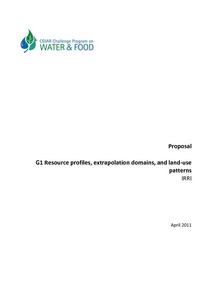Resource information
The Ganges Basin Development Challenge (BDC) research program will focus on brackish-water coastal zones in the Ganges Basin, where agricultural lands have a maximum salinity greater than 5 ppt (parts per thousand) in the dry season (salinity is lower in the wet season). The BDC vision of success requires innovations in water governance, improved availability of dry-season water, improved practices for managing salt-affected lands, and intensification and diversification of farm systems. In short, the program requires technological innovation and effective dissemination of those technologies.
Before a technology can be disseminated beyond the study site where it is developed, it is important to identify its “extrapolation domain.” This requires matching the resource profile of an area with the resource requirements of a technology. The goals of these technologies—increased resilience, improved livelihoods, increased production—also require an understanding of how can the land in the coastal zones best be zoned and used to meet different goals and objectives? And, how should land use change for anticipated hydrological change scenarios? This project aims to answer the question of “what works where” now and under climate change scenarios.
The G1 project has four activities, each with one output.
1) Compilation of a geodatabase covering all spatial information related to the project.
2) Characterization of the test sites and study areas from projects G2 and G3.
3) Mapping extrapolation domains for each technology from G2.
4) Development of future land-use plans based on historical land-use trends, assumed changes, constraints, and interventions from future scenarios.
The likely impacts of G1 are
i) Better targeting information for local government and extension services, which in turn leads to a higher likelihood of adoption of new crop intensification and water governance strategies.
ii) Better decision making at the local government level due to improved awareness of land-use options.


